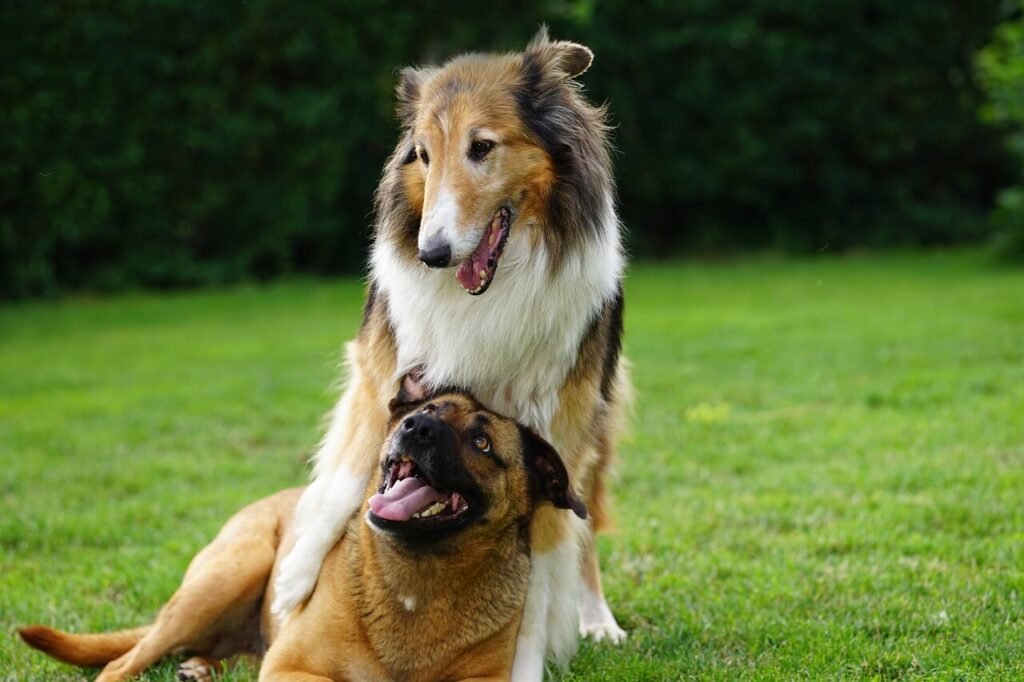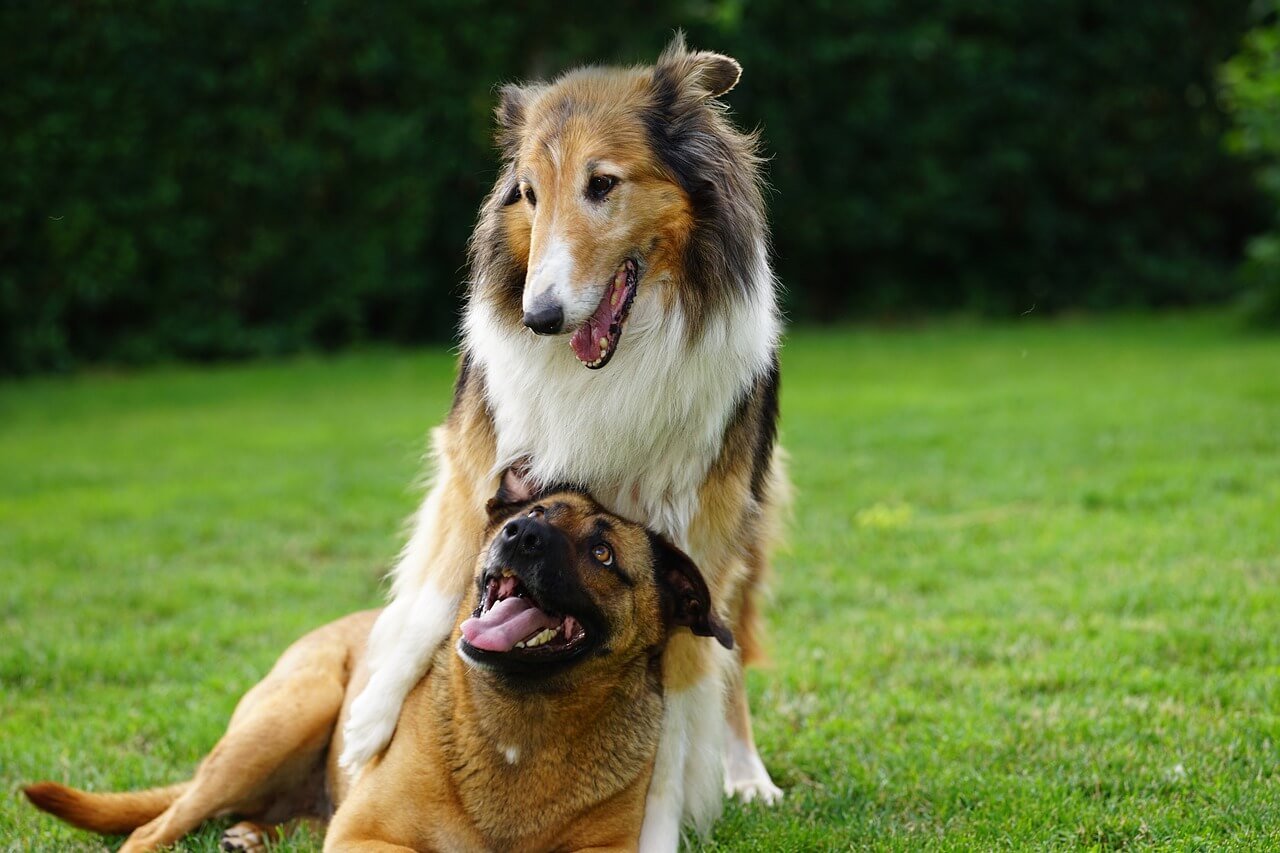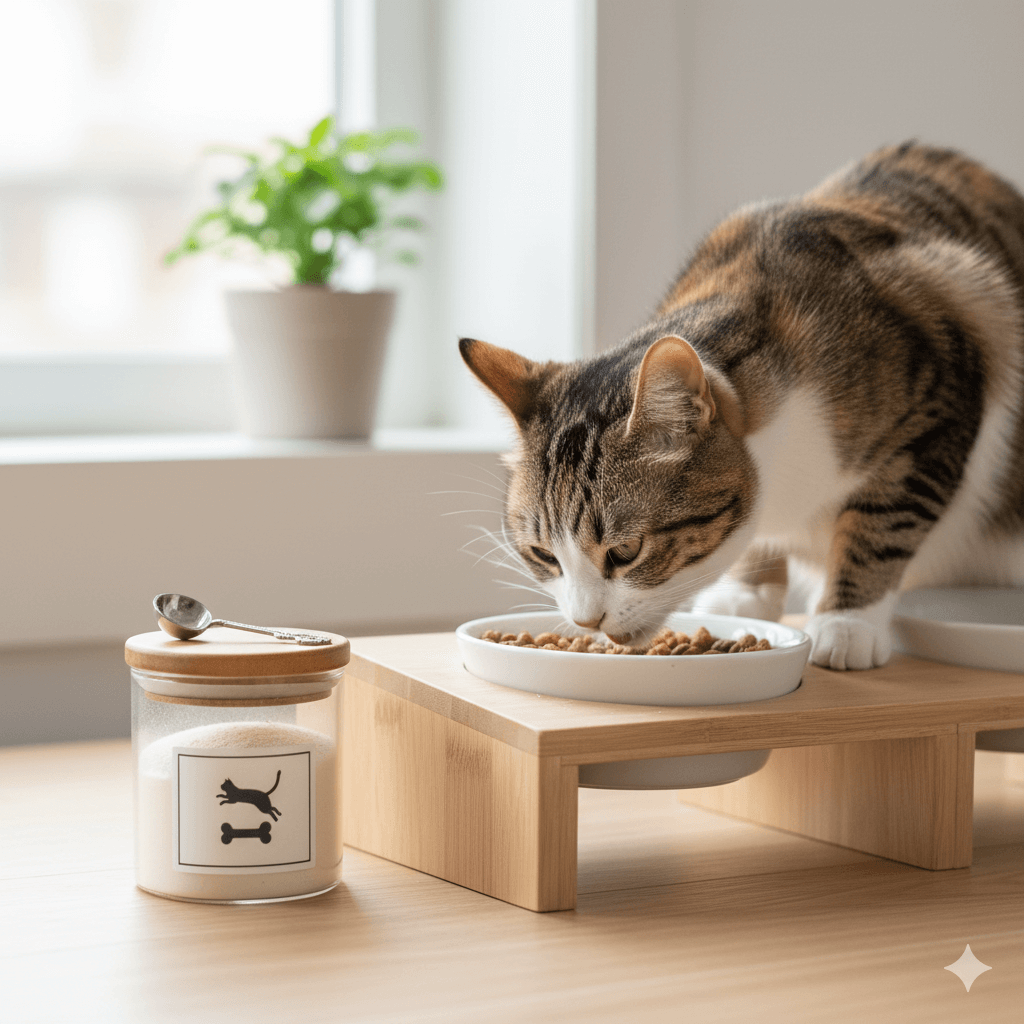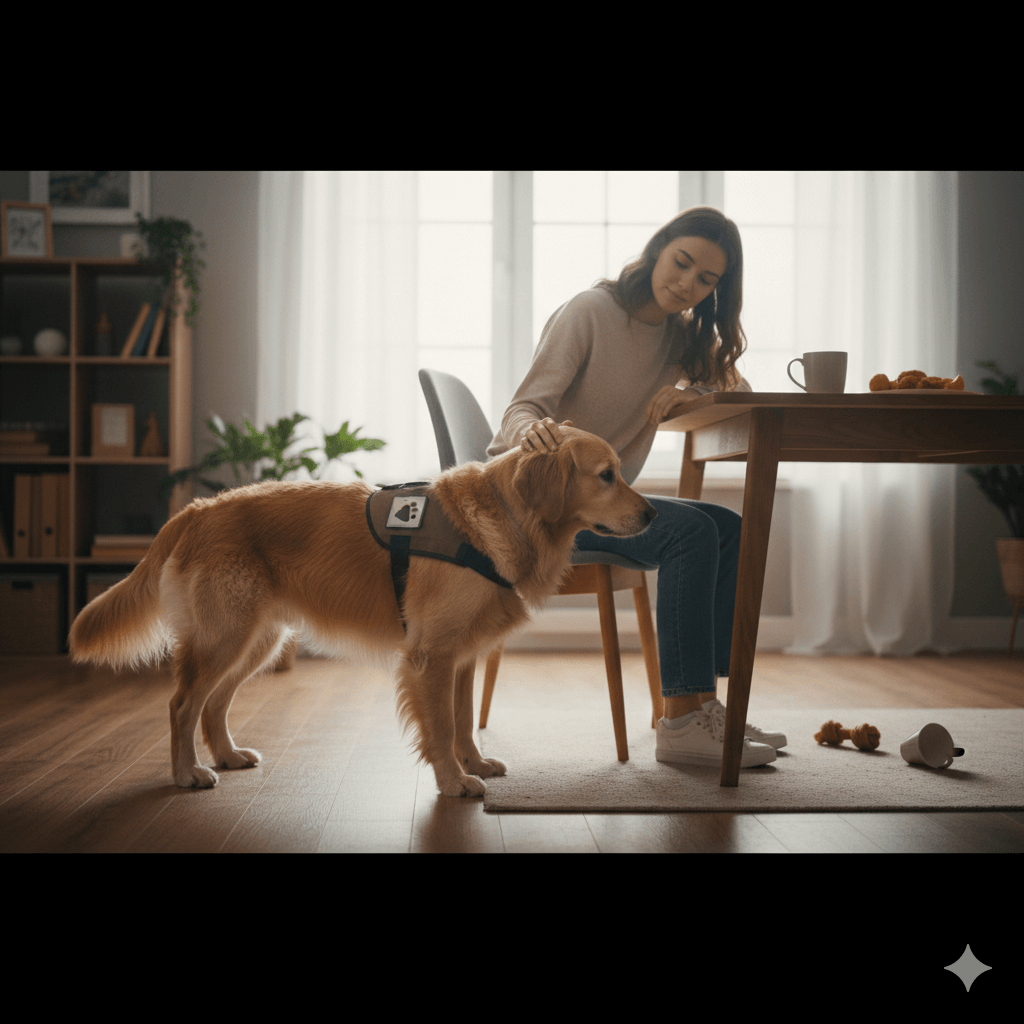What Happens When Dogs Get Stuck After Mating?
If you’re a dog owner or breeder, you may have heard about the phenomenon of dogs getting “stuck” after mating. This natural occurrence, known as the copulatory tie, can be alarming if you’re unfamiliar with it. During this process, the male and female dogs remain physically connected for a period of time, which is essential for successful breeding. While it might seem unusual or concerning at first glance, understanding the science behind this behavior can help you better care for your pets during this critical phase. In this article, we’ll explore what happens during the copulatory tie, why it occurs, and how to ensure your dogs’ safety throughout the process.
Understanding the Copulatory Tie: What’s Happening?
The copulatory tie is a natural and necessary part of canine reproduction. It ensures that sperm is effectively transferred from the male to the female, increasing the chances of successful fertilization. Here’s a breakdown of what happens during this process:
Swelling of the Bulbus Glandis:
In male dogs, the bulbus glandis—a structure at the base of the penis—swells during mating. This swelling locks the male and female together.Locking Mechanism:
The female’s vaginal muscles contract around the swollen bulbus glandis, creating a secure connection between the two dogs.Duration of the Tie:
The copulatory tie typically lasts anywhere from 5 to 45 minutes, depending on the dogs involved.Sperm Transfer:
The tie allows sperm to travel safely from the male to the female’s reproductive tract, maximizing the likelihood of conception.Reversal of Positions:
Often, the male dog will turn around during the tie, resulting in the pair standing rear-to-rear until the tie is complete.
This biological mechanism is perfectly normal and plays a crucial role in canine reproduction. Understanding it helps alleviate concerns for dog owners witnessing this event for the first time.

Why Does the Copulatory Tie Occur?
The copulatory tie serves an important evolutionary purpose in canine reproduction. Its primary function is to optimize the chances of successful breeding. Below are some reasons why this phenomenon occurs:
Ensures Sperm Retention:
By locking the male and female together, the tie prevents sperm from leaking out, ensuring it reaches the female’s eggs.Promotes Genetic Diversity:
The tie increases the likelihood of fertilization, contributing to genetic diversity within the species.Prevents Interruption:
The physical connection reduces the risk of other males interrupting the mating process, giving the first male a better chance to reproduce.Strengthens Pair Bonding:
Some experts believe the tie may reinforce social bonds between mating pairs, especially in wild canines.Adaptation for Survival:
Over generations, this mechanism has evolved to maximize reproductive success, ensuring the survival of the species.
The copulatory tie is a fascinating example of nature’s ingenuity in promoting successful reproduction among dogs.
Check this guide 👉What to Expect from a Female Dog After Mating: Best 7 Tips!
Check this guide 👉Dog Artificial Insemination Success Rate: Best 7 Tips!
Check this guide 👉Understanding Dog Pregnancy Week by Week: Best 7 Tips!
What Happens During the Copulatory Tie? | How Long Does It Last? |
|---|---|
Swelling of the bulbus glandis | Typically 5–45 minutes |
Locking mechanism created by muscle contractions | Longer ties increase chances of conception |
Sperm transfer occurs | Duration varies by breed and individual |
Male often turns rear-to-rear | Shorter ties are still effective |
Ensures secure connection for fertilization | Stressful separation should be avoided |
What Should You Do If Dogs Get Stuck?
Witnessing dogs stuck together after mating can be unsettling, but it’s important to stay calm and let nature take its course. Here’s what you should—and shouldn’t—do during the copulatory tie:
Stay Calm and Patient:
Panicking or trying to separate the dogs can cause injury. Allow them to remain connected until the tie naturally ends.Provide a Safe Environment:
Ensure the dogs are in a quiet, secure space where they won’t be disturbed by other animals or loud noises.Avoid Forcing Separation:
Attempting to pull the dogs apart can harm both the male and female, potentially causing tissue damage.Monitor Their Behavior:
Keep an eye on the dogs to ensure they remain calm and don’t exhibit signs of distress or aggression.Consult a Veterinarian if Necessary:
If the tie lasts longer than an hour or if either dog shows signs of pain, contact your vet for guidance.
By following these steps, you can ensure the safety and well-being of both dogs during this natural process.
Common Misconceptions About the Copulatory Tie
Despite its prevalence in canine reproduction, the copulatory tie is often misunderstood. Clearing up these misconceptions can help dog owners approach the situation with confidence.
It’s Not Painful for the Dogs:
While the tie may look uncomfortable, it’s a natural process that doesn’t cause pain when left undisturbed.It Doesn’t Always Mean Pregnancy Will Occur:
A successful tie doesn’t guarantee pregnancy; other factors like timing and fertility also play a role.Separation Isn’t Always Dangerous:
In rare cases, dogs may separate prematurely without harm, though it’s best to let the tie run its course.All Breeds Experience the Tie Differently:
The duration and intensity of the tie can vary based on breed, size, and individual differences.It’s Not a Sign of Aggression:
The rear-to-rear position is normal and not indicative of aggressive behavior between the dogs.
Dispelling these myths helps foster a better understanding of the copulatory tie and its role in canine reproduction.
Signs That Something Is Wrong
While the copulatory tie is generally safe, there are instances where something might go awry. Recognizing warning signs can help you act quickly to protect your dogs.
Excessive Whining or Crying:
If either dog is vocalizing loudly or seems visibly distressed, it could indicate discomfort or pain.Prolonged Ties Beyond an Hour:
Extended ties may signal complications and require veterinary intervention.Signs of Aggression:
Growling, snapping, or biting during the tie is uncommon and should be addressed immediately.Bleeding or Discharge:
Any visible blood or unusual discharge could indicate injury or infection.Difficulty Walking Afterward:
If either dog struggles to move normally after the tie, consult your vet to rule out injuries.
Being vigilant about these signs ensures your dogs receive prompt care if needed.
Tips for Responsible Breeding
If you’re considering breeding your dogs, preparation is key to ensuring a safe and successful mating process. These tips can guide you toward responsible practices.
Choose Healthy Breeding Pairs:
Ensure both dogs are healthy, free of genetic disorders, and up-to-date on vaccinations.Consult a Veterinarian:
Schedule pre-breeding checkups to confirm both dogs are physically ready for mating.Supervise the Process:
Stay nearby during mating to monitor the dogs and intervene only if necessary.Provide Proper Nutrition:
Feed the female a high-quality diet before and after mating to support her health and potential pregnancy.Understand the Risks:
Be aware of potential complications, such as phantom pregnancies or failed conceptions, and plan accordingly.
Following these guidelines promotes ethical breeding and prioritizes the well-being of your dogs.
Alternatives to Natural Breeding
Not all dog owners choose natural breeding, and there are alternative methods available for those who prefer more controlled options. These alternatives offer flexibility and reduce risks associated with traditional mating.
Artificial Insemination (AI):
AI eliminates the need for physical mating, reducing stress and potential injuries for both dogs.Professional Breeding Services:
Enlist the help of experienced breeders who can oversee the mating process and provide expert guidance.Genetic Testing Before Breeding:
Conduct tests to identify potential hereditary issues and ensure healthier offspring.Freezing Semen for Future Use:
Preserving semen allows for planned breeding even if one dog is unavailable or located elsewhere.Adopting Instead of Breeding:
Consider adopting a dog instead of breeding, helping reduce overpopulation and giving a home to a dog in need.
Exploring these alternatives can help you make informed decisions about your dog’s reproductive future.
Frequently Asked Questions About Dogs Getting Stuck After Mating
Is it normal for dogs to get stuck after mating?
Yes, it’s completely normal. The copulatory tie is a natural part of canine reproduction.
How long does the tie usually last?
Typically, it lasts between 5 to 30 minutes, though variations can occur.
Should I try to separate them?
No, attempting to pull them apart can cause injuries. Let the process resolve naturally.
Can the tie harm the dogs?
Generally, it doesn’t harm them unless there are underlying health issues or external interference.
What if the tie lasts too long?
If it exceeds 45 minutes or causes distress, consult a veterinarian immediately.
Respecting Nature’s Process: Supporting Your Dogs During Mating
The copulatory tie is a remarkable example of nature’s efficiency in ensuring successful reproduction among dogs. While it may seem unusual or even alarming to witness, understanding its purpose and mechanics can help dog owners respond appropriately. By staying calm, providing a safe environment, and avoiding interference, you can support your dogs through this natural process. Remember, knowledge and patience are key to navigating the complexities of canine reproduction. With proper care and attention, you can ensure the health and happiness of your beloved pets during this important phase of their lives.
Understanding Bone Supplement for Cats: Best 7 Expert Tips! – Safe, vet-approved guidance for strong feline bones & balanced nutrition.
Bone Supplement for Dogs: Best 7 Expert Tips! – Expert guide to calcium, collagen & bone health for every life stage.
Understanding Can Cats Get Sunburn: Best 7 Expert Tips! – Protect your feline from UV damage with vet-backed prevention strategies.
How to Train a Seizure Alert Dog: Best 7 Expert Tips! – Learn expert-backed steps to nurture natural instincts into reliable, life-saving seizure alerts.





